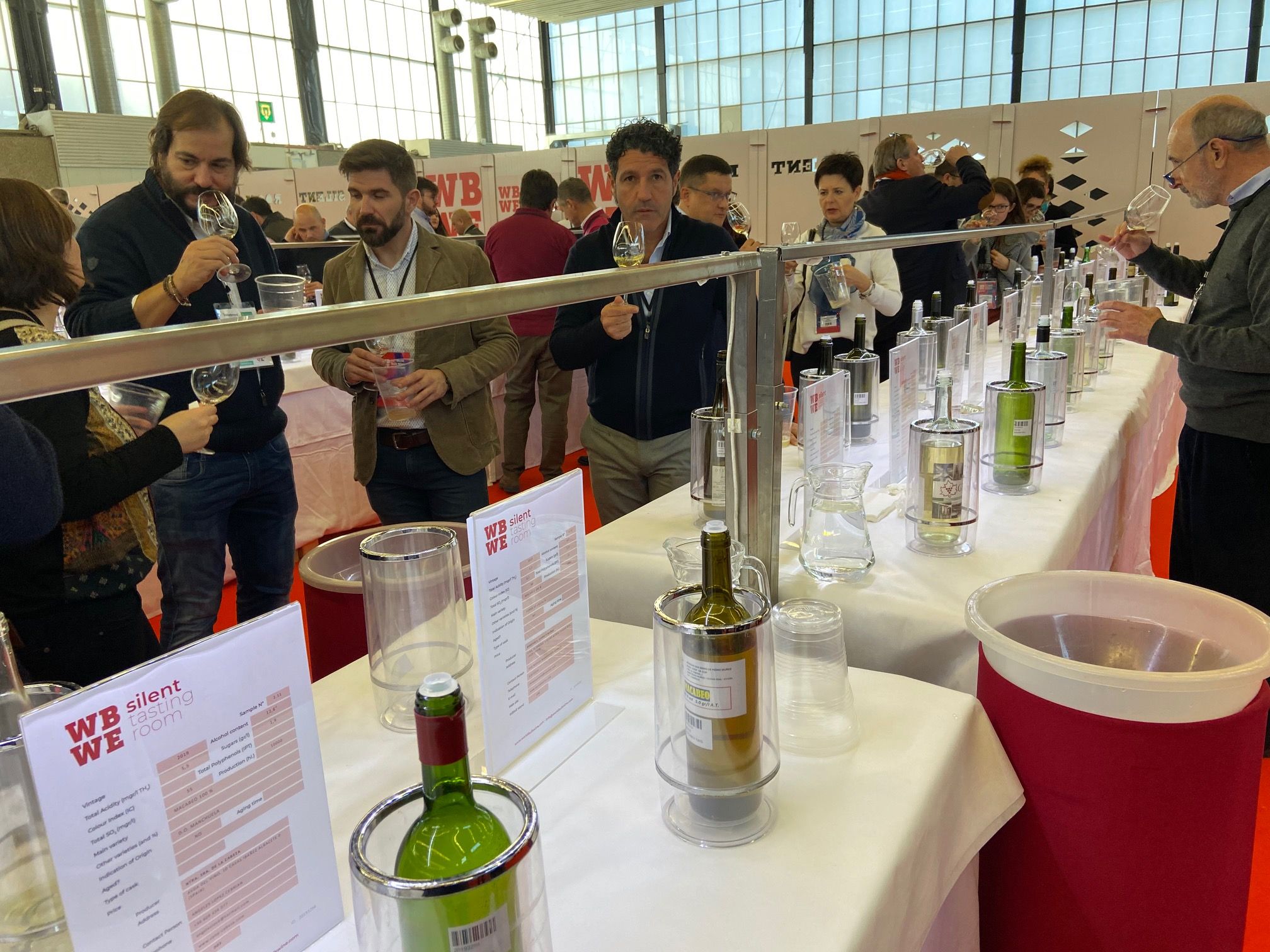Amsterdam was once again the home for leading buyers and producers around the world to set the agenda for what prices are being set for the global wine sector at the World Bulk Wine Exhibition.
For seasoned campaigners at the World Bulk Wine Exhibition it was a case of getting back to normal at last week’s show, with plenty of quality wine to buy at good value prices. But then that did depend on which part of the hall you were in and what you were there to buy and sell.
The two clear winners at the show, in terms of having wine to sell at prices that attracted the most coveted buyers, were Argentina and Moldova. As Mark Roberts, sales director at Lanchester Wines in the UK said: “That’s where the value is.”
The spotlight is once again fully back on Argentina as its weakened economy and struggling currency, coupled with a much larger than average 2019 harvest, meant that prices for its bulk wine have plummeted to as far as €0.50 cents per litre for the most in demand generic varieties.
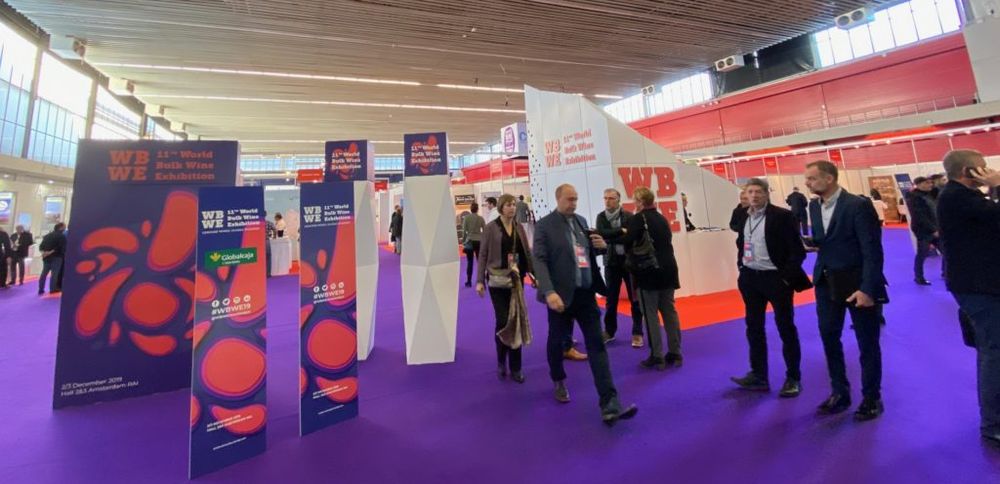
The world’s bulk wine buyers were in Amsterdam last week
In fact the biggest issue for Argentine producers was finding enough buyers to empty their tanks before the next above average harvest is expected in the first quarter of next year.
All this interest, though, also brings added pressure for Argentina producers to live up to the expectations of the market and provide buyers with the full service they require. An area where Argentina, as a whole, has struggled in the past, not always delivering on the promises and contracts made.
Different dynamics
But the dramatic fall in prices in Argentina, and to a lesser extent in Chile, looks like changing the usual dynamics of international bulk wine prices.
Let’s take Spain. Here a smaller 2019 harvest in key bulk producing areas such as Castilla La Mancha, and a hardening of prices as a result is not necessarily going to see the usual re-adjustment of prices around the world, said Robin Copestick, managing director of Freixenet Copestick.
He was at the show visiting a number of its bulk suppliers, noticeably Penaflor in Argentina, and he sees Argentina’s low prices continuing, regardless of the situation in Spain.
Juan Fuente Rus, managing director of major La Mancha co-operative, Manjavacas, said its production was down by 15% for the 2019 harvest and with no roll over stock from 2018 he would expect to see prices rise for some grapes. But it will depend on the quality and it won’t be for all varieties, he stressed.
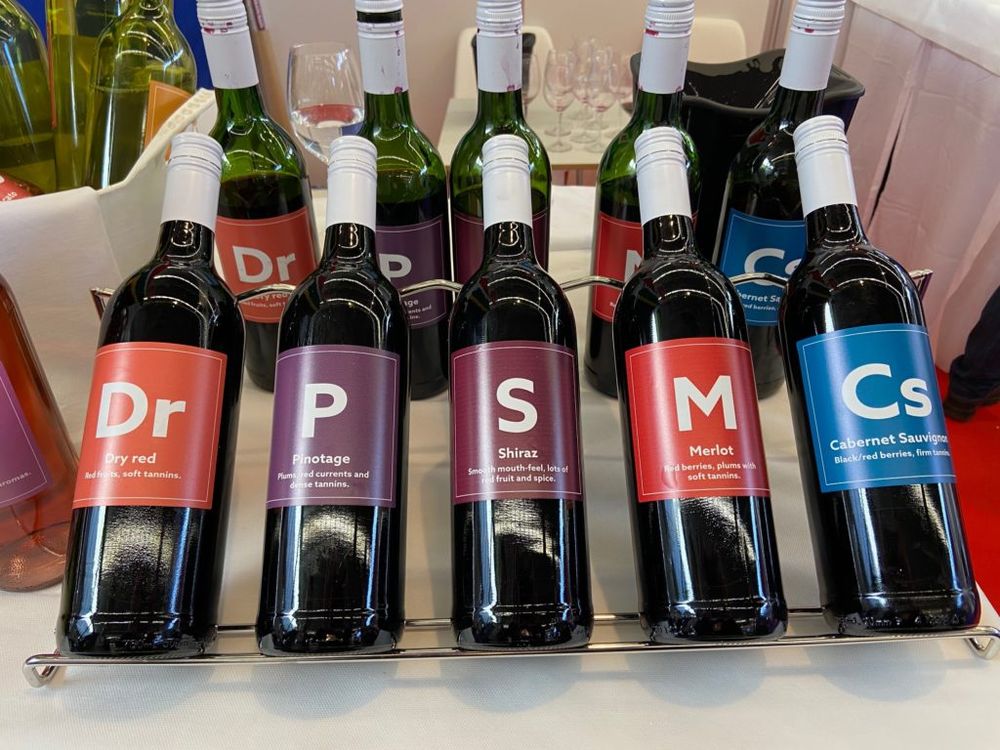
Buying wine bulk style
Time for Moldova
It seems Moldova’s years of persistence trying to make it on the international stage is finally starting to pay dividends. Thanks to the winning combination of big volumes, good quality and great prices. Both for international and local varieties.
It’s clear Moldova’s serious emergence on the bulk market is part word of mouth as buyers, retailers and distributors get to see more of what the producers can do and experience for themselves the step change in quality.
Lesley Cook, head of buying at Lanchester Wines, said it has been working with Moldova for at least six years and first went there for Pinot Grigio. The quality and diversity has moved on a great deal since then, she added. The main indigenous varieties, like Feteasca Neagra, are also great for blending, she said. “We have switched our Merlot to Moldova now and away from South Africa due to pricing. The styles of their wines have improved over the last five years and become a lot more commercial,” she added.
Roberts at Lanchester Wines agreed: “The diversity from Moldova is seriously brilliant. The local varieties in particular. We are starting to blend wines from Moldova. They are very impressive.”
The feedback, though, from across the buyers that VINEX spoke to is that it’s a mixed picture and that the leading players are very much head and shoulders ahead of the rest of the industry.
But 2019 will be seen as the year that Moldova really came to the party. Andrian Digolean, of Wines of Moldova, said that whilst its bulk production was up to 70% of its exports it was also keen to promote its bottled and premium wines too.

Moldova’s
Moldova is clearly being helped by government funding, particularly around determining which grape varieties are best suited to which vineyard areas, said Digolean. Which, in turn, is having a big impact on the quality of its wines.
It is, for example, investing a great deal in looking at how different grape varieties, including its indigenous grapes, cope in different climates. Wines of Moldova have set up six experimental plots in each of its three main wine regions to see how different grapes ripen, and how they use water and respond to temperature changes, humidity and winds.
Digolean told a conference at WBWE that it had seen big changes in terms of abv levels, which had increased for some varieties from 13-15% over the last three years, as well as changes in acidity of up to 25-30%. The key was to determine which varieties can deal with all these changes to still make good quality, fresh wines for its export markets.
Which means encouraging producers to plant more climate resistant varieties and, in time, looking to plant more vines in the cooler, more northern parts of the country.
“We are seeing more producers doing this,” said Digolean, and the number of hectares dedicated to resistant varieties is now closer to a 1000 hectares compared to 100 a few years ago.
Ready but waiting
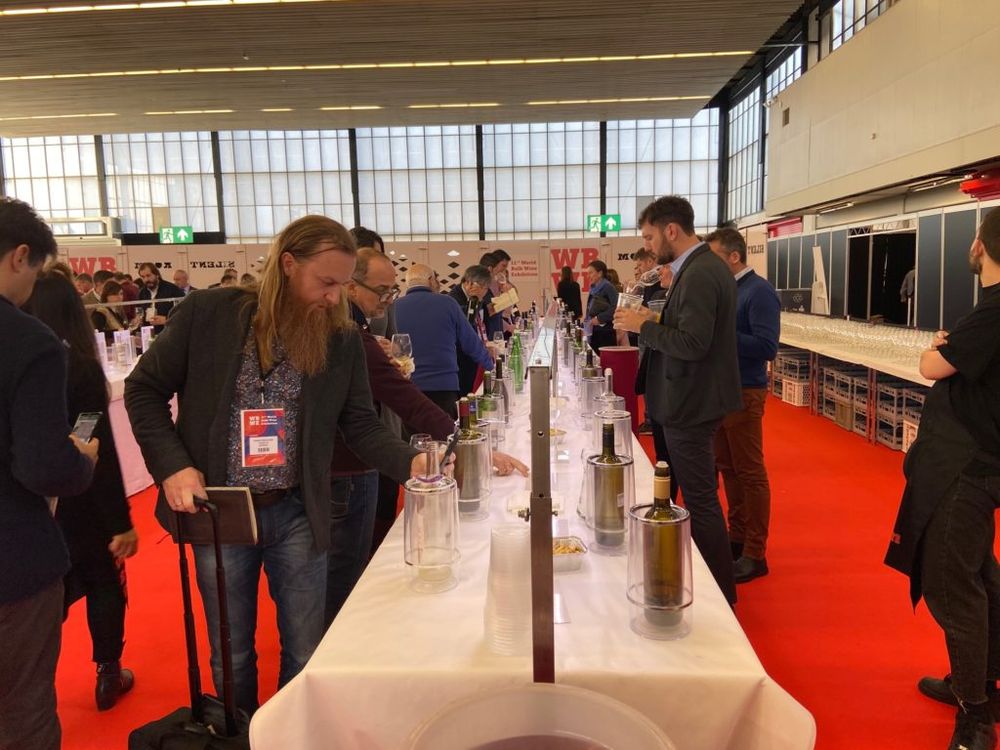
The bulk fair is the chance to benchmark styles from all over the world
Elsewhere the mood was more cautious with a lot of buyers and producers reluctant to show their hand when it came to the major New World countries, particularly South Africa and Australia, as the market awaits just how good the forthcoming 2020 harvest might be.
It was a quiet fair for a lot of the Australian brokers, who will be hoping for a better harvest in the new year. “The bulk wine sector is very quiet,” said Paula Edwards from Wine Grapes in Australia. “It’s not been great. The big 2017 vintage stalled the bulk market and there are still good stocks in the market.”
She added: “The domestic market been challenging since we changed our tax laws. Around 60% of our bulk wine has gone to China in the last two years, with the rest going to the EU. The free tariffs into China has clearly helped. The Chinese like Shiraz and Cabernet and there are a lot of Australian based companies importing bulk wine there now,” she explained.
Wine Grapes is selling to China at around A$3 to A$4 a litre, which is similar to its market in the UK, for bottles that would retail around £7 to £8. The average bulk price to the UK from Australia is nearer A$1.80, she stressed.
Better prospects
The good news for South Africa is that buyers are starting to come back and ask questions again after two years effectively in the bulk wilderness as short, drought driven harvests, saw stocks plummet and prices jump up, said Bernard Fontannaz, managing director at Origin Wine.
Prices have risen so much in South Africa for bulk that is has for many buyers priced itself out of the market, particularly in light of the crop and prices available in Argentina, was the common consensus amongst buyers.
Rollo Gabb of Cape Wine Exporters and Journeys End in South Africa said the industry is going to need to have tough conversations about how far they are willing to go on bringing prices down to get the market going again. Fontannaz agreed, but said at least they were back in the debate again and was hopeful the market will return in 2020. But he admitted it was “tough and challenging”.
Planning ahead
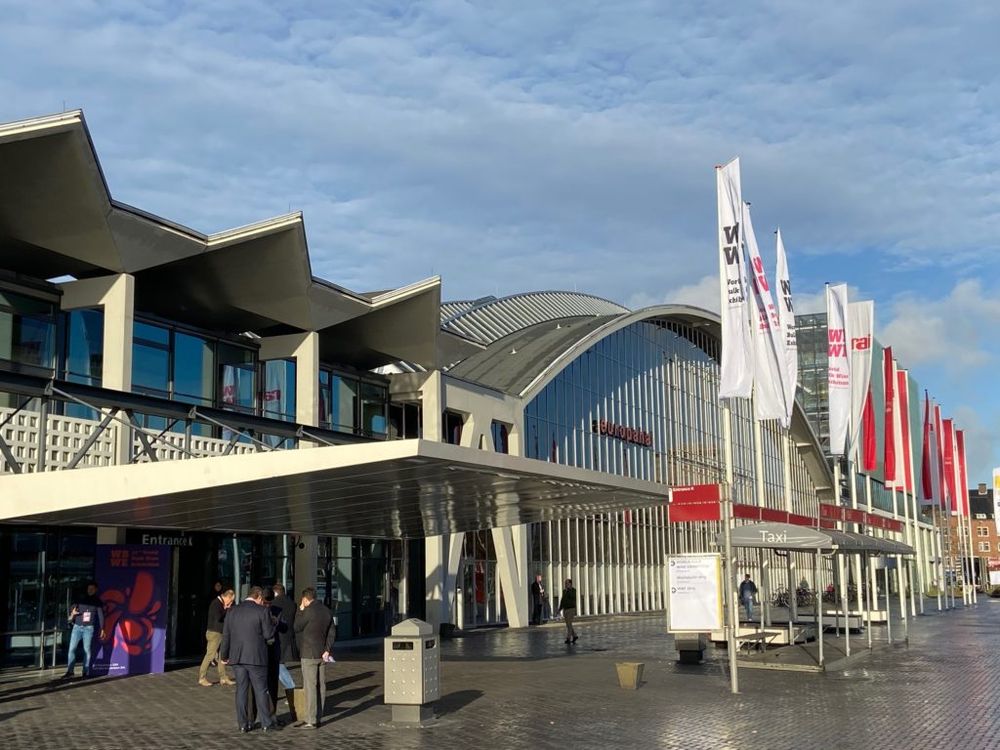
Amsterdam calling for bulk wine
This year’s WBWE was once again an opportunity for the global wine bulk industry to come together and share ideas and insights.
As Cook at Lanchester Wines said it is an opportunity to “look at contracts with current suppliers and see what we have to do with them for the new vintages. Also a chance to see what is new and different and if you are over or under in any areas then you can sort it out here”. Roberts added: “It’s good to have initial meetings here and then have the follow up at ProWein.”
This year’s event also included a full conference programme covering debates and talks on a wide range of issues. Highlights included a high level debate on the US, California and bulk wine market and how producers were having to cope with what was described as a “wine glut” that had seen prices for bulk wines plummet. Its biggest challenge was finding enough buyers to come into its market.
Ana Diogo Draper, winemaker at Artesa Vineyards in Napa said: “Cabernet prices have gone down considerably and people are keeping quiet about it. Some are losing a lot a money on what they can get for their grapes, particularly for non vintage blends.”
Which, in turn, she added is a “big opportunity for bulk in California”. “People are reticent to lower the bottled prices, but will do for bulk. There are spectacular Cabs from the 18 and 19 vintages and great quality Cabernet bulk. There is lots more opportunity in bulk than in bottle.”
It was interesting to see what role bulk could now play with the big tariffs being placed on EU wine in the US particularly from Spain and France, but where a lot of bulk wine will be exempt, said Alison Leavitt of the Wine and Spirits Shippers Association. Deborah Parker Wong claimed that some French producers are circumnavigating the tariffs by sending rosé wine to be bottled and blended in US.
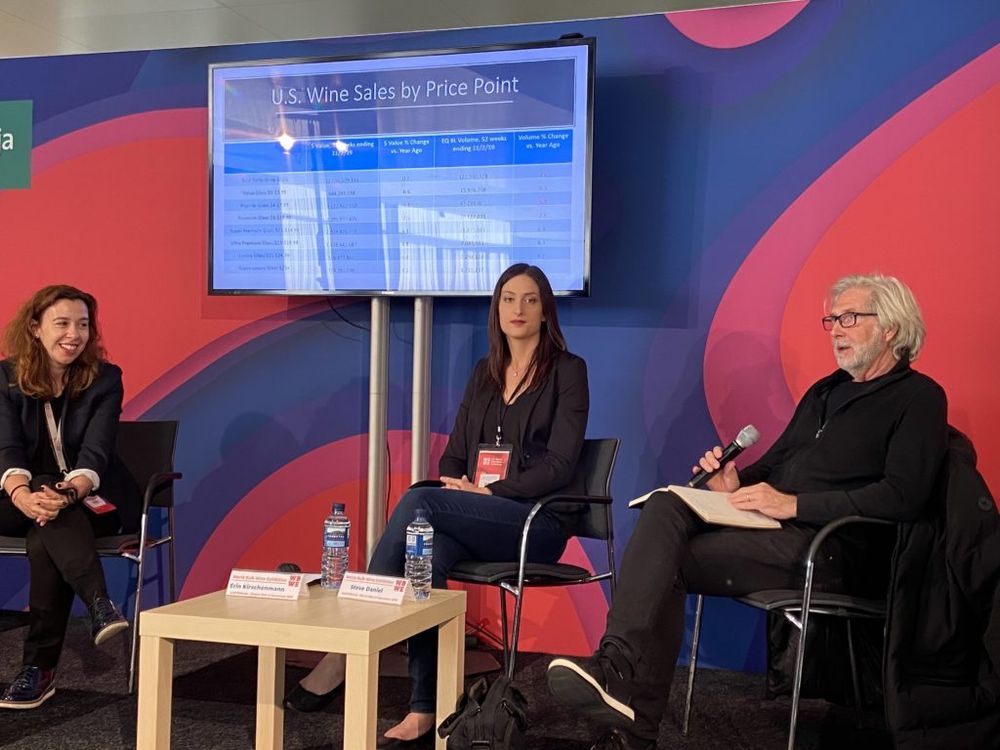
Steve Daniel said he was on the look out for Pinot Noir from California
Steve Daniel, head wine buyer for Hallgarten Druitt,, said he was on the look out for more premium Pinot Noir from the US and California rather than dip his to in the lake of Cabernet Sauvignon that was available and not, he believes, suitable for the UK market. “We hate Cabernet in UK. We drink five times more Merlot and there is this big demand for Pinot Noir. We’re hearing lots of rumours that Russian River Pinots coming into the market which would very interesting.”
“We like to buy by varietal and price,” he told the debate. “California for us is Zinfandel, Rhone varietals and Pinot. We are not into Chardonnay and Cabernet as we can buy better from other parts of world. But the UK consumer wants to buy into California. It’s seen as glamorous. It’s just the price of bottled wine is often too high. But it’s good to see more importers getting back into California.”
* This is an extended version of one first published on VINEX the bulk and bottle trading site.
